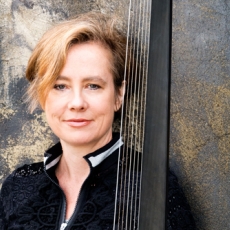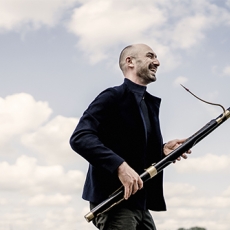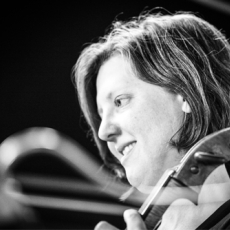Pamela Thorby - Telemann: Recorder Sonatas and Fantasias - Audio Video Club of Atlanta
Pamela Thorby, long anointed by admirers as the "Queen of the Recorder," has never been in better form than she is here in her CD release of the complete Sonatas and Fantasias by Georg Philipp Telemann (1681-1767). In fact, these works, and the 12 fantasias in particular, may be considered a summit of the recorder player's art.
Thorby recorded the 7 sonatas on 29-30 April 2014 at the National Centre for Early Music in York, with the assistance of some distinguished collaborators: Peter Whelan, bassoon; Allison McGillvray, cello; Elizabeth Kenny, archlute and guitar; and Marcin Swiatkiewicz, harpsichord and organ. As we can gather from the glorious sunlight pouring through the windows in the session photos, it must have been lovely spring weather in York. Whether or not that was a factor, the performers seem very happy and relaxed in the photos, and their performances reflect it. That's important because Telemann often comes across as the most natural and spontaneous of composers, one whose melodies flow with an easy grace, radiating beauty and conviviality that belies the composer's pains. We also get the impression of Telemann as a man of endless creative imagination. (That is quite true: of all the composers of the baroque, he was virtually unique in almost never "re-heating" existing material. The way his fertile mind worked, he found it easier to compose entirely new music, the freshness of which speaks for itself.)
The sonatas on CD1 utilize the talents of Thorby's collaborating artists according to what seemed the best requirements of the music. The Sonata in D minor, TWV 41:d4, with its appealing though austere Affetuoso and Grave movements, is given the sparest setting, with only harpsichord accompanying the recorder's elegantly phrased melodies. On the other hand, the more expansive Sonata in B-flat major, TWV 42:B4, with the easy beauty of its Dolce and Siciliano, utilizes the talents of McGillvray, Kenny and Swiatkiewicz in addition to Thorby, so that it takes on the proportions on an actual trio sonata. (Which brings up the question people always ask: why did it take four musicians to play a trio sonata? You can look that up for yourself!) Whelan's bassoon is heard only in sonatas 3, 4, and 6 in the present program, but it makes an immediate impression, worthy of this performer's well-known warmth and artistry.
Thorby returned to the scene of the crime on 24-25 July of the same year to record the 12 Fantasias for solo flute (12 Fantaisies à travers sans basse). Though often performed on the violin or, as indicated, the traverse flute, they sound very idiomatic on the several recorders Thorby uses here. One might be tempted to compare them with J.S. Bach's violin sonatas and partitas, but the analogy soon ends. The recorder, an end-blown wooden instrument with fingered holes, is basically a single-line melody instrument without the advantages the violin possesses in its ability to play alternating bariolage and stops on several strings, giving the impression of multiple voices. In fact, some scholars have been skeptical as to the suitability of the recorder to handle the demands of this music at all.
If that's the case, no one ever bothered to inform Telemann - or Pamela Thorby, for that matter! Playing several different members of the recorder family and utilizing all the resources of her slur chart, she negotiates her way through some of the most technically difficult music you can imagine as if it were (as we Americans say) "a piece of cake." And it all sounds beautiful! Rustic dances and stylized bird calls (of which we have a virtual aviary in the Presto finale of Fantasia No. 12) take full advantage of the sort of things the recorder does best, while the fugues in Fantasias 2 and 6-11 give us the deceptive impression of actual polyphony. Perhaps the point of deepest beauty is the Affettuoso in fantasia No. 9, which is simply one of Telemann's most memorable moments. Thorby deftly transposes at sight the signature keys of every one of these 12 fantasies, something she describes as "second nature to a recorder player."





